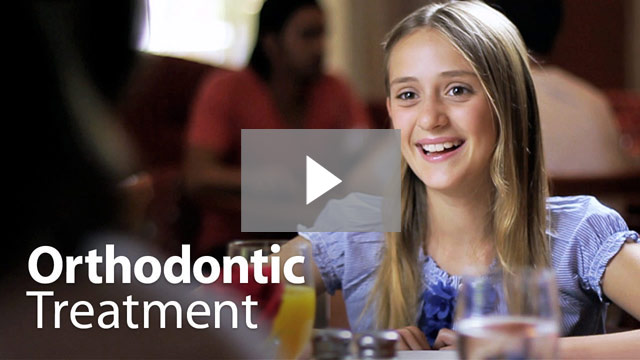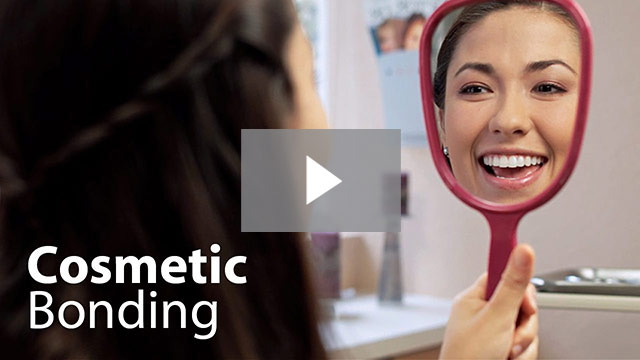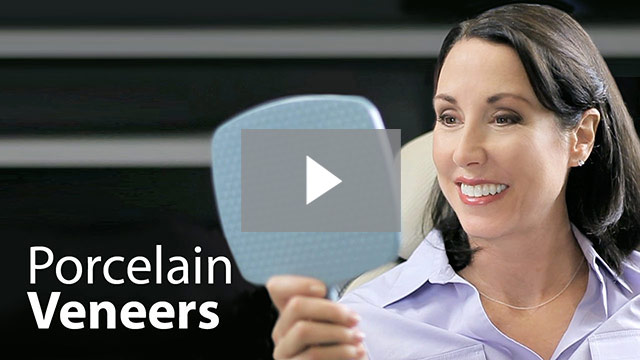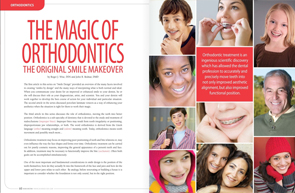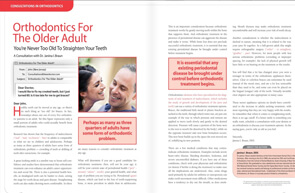Gaps in Teeth
There are several ways to close unsightly gaps depending on the cause of the space, its size, its location, and the condition of adjacent teeth. Both cost and your personal needs will play a significant role in your choice of treatment. Options to correct gaps include :
- Repositioning teeth with orthodontics.
When teeth are attractive and healthy, repositioning is the deal treatment, as it involves no loss of enamel. Some alternatives, such as ull crowns, require sacrificing healthy tooth structure for cosmetic correction.
- Restoring teeth through bonding, veneers, or crowns.
Patients frequently prefer immediate results. In such cases, bonding or laminating with porcelain may be the answer. In other cases, a combination of therapies offers the best results.
- Removal of teeth, followed by replacement with a bridge or implant.
Removal is used only as a last resort.
Orthodontics is a long-lasting, conservative approach to closing unsightly spaces between teeth. New techniques that are almost invisible have removed some of the stigma of having braces; however, orthodontics does take longer than most of the other options. Orthodontics may be the best option if you:
- Want to use the most conservative method, in terms of cost and loss of tooth structure
- Are willing to invest time in the procedure
- Don't mind some compromise of esthetics during treatment
- Will agree to wear your retainer at night indefinitely
- Have otherwise healthy and attractive teeth
In the long run, orthodontics is the best solution for most people. Even if full crowns eventually will be needed, teeth should be aligned properly first. And although orthodontic treatment requires regular adjustments and the most time of the alternatives - usually taking 6 months to 2 years to complete - it has the advantage of leaving the natural teeth intact and close to a permanent solution (although in most cases, retainers must be worn to keep teeth from shifting back to their original positions).
In recent years, bonding has proved to be highly effective treatment for closing spaces between the teeth. Bonding may be the best option if you:
- Want immediate result
- Desire a less expensive and less invasive option than veneers or crowns
- Have other esthetic problems that could be solved by bonding
- Prefer a procedure that is reversible
Bonding can be used successfully on both upper and lower teeth. However, bonded teeth are more likely to chip, crack, and stain than are natural teeth, particularly the lower front teeth, which are more susceptible to forces from chewing. This also means that some repairs to the bonding are considered normal maintenance during its life expectancy. If you have bonded teeth, a professional cleaning three to four times a year is a must. Even then, the bonding may need to be replaced or repaired in 5 to 8 years.
Porcelain veneers provide a more esthetic option compared with bonding. Porcelain veneers may be the best option if you:
- Consider esthetics to be more important than expense
- Are comfortable with the required enamel reduction
- Want to avoid the chipping that can occur with bonding as well as the higher expense of crowns
Although bonding is the quickest way to close spaces between the teeth, laminating with porcelain is also an option. Although veneers take at least two appointments and typically cost much more than bonding, a major advantage is the proportional accuracy that they provide. This technique is especially effective when spaces are not uniform. Another reason to choose porcelain veneers is that they will not stain nearly as much as bonded restorations.
Although crowns can provide beautiful results-filling gaps and lightening tooth color just like bonding-they typically are not the treatment of choice for spaces between the teeth because their placement requires considerable reduction of natural tooth structure. However, in cases where teeth are badly damaged, these finely sculptured lookalikes are often ideal.
In most cases, gaps between teeth are better addressed using less invasive procedures such as orthodontics or bonding. However, there are some circumstances in which crowns offer the best solution. Crowns may be the best option if you:
- Have teeth that are badly damaged
- Require or desire major changes in the shape or alignment of your teeth
- Feel comfortable with the higher cost and loss of tooth structure associated with crowns
Crowns are a more time-consuming and costly option than bonding or veneers. Crowns are not as likely to chip as veneers and bonding; however, replacement still may be required within 5 to 15 years.
| Orthodontics | Bonding | Porcelain Veneers | Crowns |
Treatment Time |
|||
| 6-24 mo for most patients | 1office visit; 1-2 hours per tooth | 2 office visits; 1-4 hours each (more time needed for office visits, more extensive treatment) | 2 office visits; 1-4 hours each for up to 4 teeth (more time needed for more extensive treatment) |
Maintenance |
|||
Brush and floss daily. |
Have a professional cleaning 3-4 times per year. |
Have a professional cleaning 3-4 times per year. Take special care when biting into or chewing hard foods. Use your back teeth to avoid placing torque on the veneer. |
Avoid biting down on hard and ice. |
Results |
|||
| Spaces between teeth are closed. | Most spaces can be filled in to look natural. | A polished, natural-appearing result that effectively closes spaces | The best method to improve tooth shapes to fill spaces |
Treatment Longevity |
|||
| Generally permanent if retainer is worn at least a few nights per week | 5-8 years, with professional refinishing once every few years. | 5-12 years if special care is taken | 5-15 years (directly related to fractures, problems with tissues, and decay) |
Advantages |
|||
Closes space between teeth |
Little or no tooth reduction required. |
Easier to obtain proportionate closure of spaces. |
Can be shaped to esthetically fill gaps. |
Disadvantages |
|||
Time-consuming |
Can chip or stain more easily than veneers or crowns. |
More expensive than bonding |
Can fracture. |
Related Orthodontic Articles
The orthodontic treatment using clear aligners consists of a series of aligners that you change about every two weeks over a course of treatment lasting six to eighteen months depending on how much movement is needed... Read Article
Teens who regard traditional braces as restrictive, confining, and obstructive to their lifestyles now have another choice for orthodontic treatment: clear aligners. This advanced dental technology, originally geared toward adults, has recently evolved to treat a greater variety of bite problems in younger people. These improved orthodontic appliances can help teens function normally during a difficult phase of life... Read Article
Proper alignment of the teeth is basic to "Smile Design." Their position dictates how they work together and affects the way you look and smile. Only orthodontic treatment can move teeth into the right position. Simply put, when things look right, they probably are right. Learn the basics of smile analysis and design and whether the magic of orthodontics will work for you... Read Article
Healthy teeth can be moved at any age, so there's no such thing as "too old" for braces. In fact, nowadays about one out of every five orthodontic patients is an adult. Yet this figure represents only a small portion of adults who could actually benefit from orthodontic treatment... Read Article
